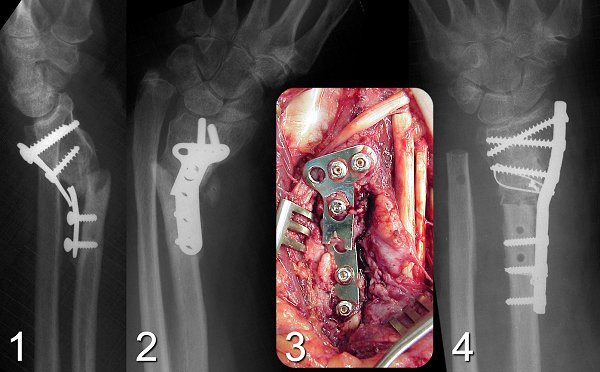

Figure Legend: Distal radius nonunions
are uncommon, but usually symptomatic due to progress of angulation and
symptoms from distal radial ulnar joint disruption. This patient
developed progressive angulation and hardware failure following dorsal
plating of a Galeazzi type metaphyseal distal radius fracture dislocation
(1, 2). The original surgeon should have used a more sturdy plate
and should have captured more cortices proximally. At exploration,
soft tissue interposition was found in the fracture line, and the extensor
pollicis longus tendon was on its way to an attritional rupture, positioned
behind the plate (3). The fracture was reduced, stabilized with a
3.5mm plate and cerclage, and the distal ulna was used as bone graft (4).
| e-Hand | Go Back | Search | Textbook |